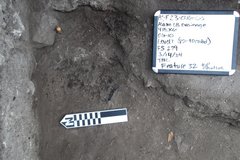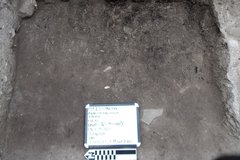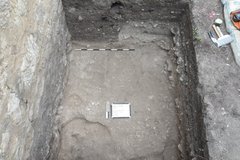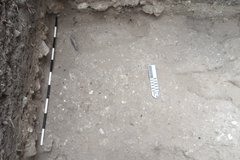Two excavation units, EU-10 and EU-12 were active this week.
In EU-10, archaeologists reached a depth of approximately 70 cm below surface. During excavations, two distinct features were encountered. The first feature was evidence of a burning episode and the fractured remnants of a caliche surface. The only portions of the surface still intact was in the northeast corner of the unit and extended approximately 7 cm to west. Immediately below the surface was a dark sediment rich in charcoal. The burning extended across the northeast quadrant of the unit. The deposit appears to continue below into the next level. There were not many artifacts found within the deposit but did include ceramics and lithic debitage.






